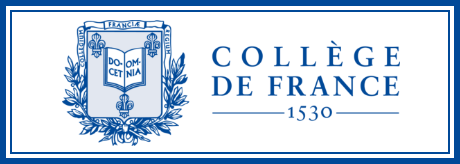Focusing on cardiovascular diseases, the goal of my research is to use multi-modal big data analysis to create reliable network models of human biology and disease. Network models have enormous potential to improve our ability to predict disease risk, identify new therapeutic targets, and to monitor molecular effects of treatments. To achieve this goal, I have designed and generated a range of clinical datasets of cardiovascular disease that combine detailed clinical characteristics with imaging, genomics, proteomics, and other types of data.
My research has long focused on cardiovascular disease. My early work explored the role of triglyceride-rich lipoproteins in coronary artery disease (CAD), and my postdoctoral studies in mouse models established the hepatic gene microsomal triglyceride transfer protein as a key target to lower plasma cholesterol levels and reduce atherosclerosis. Since then, my primary focus has been systems analyses to generate network models from large genomic datasets—both from CAD patients in the clinic and from cellular and mouse models of atherosclerosis progression and regression in the laboratory. Throughout the last decade, I have designed and led a range of clinical and mouse model studies to elucidate the inherit complexity of CAD. As one of the first clinical scientists to apply the emerging technologies of molecular profiling to large patient cohorts, I have revealed the role of functionally associated genes in several molecular networks that drive CAD. A common complex disease such as CAD cannot be understood nor cured by targeting isolated genes. Rather, the focus needs to be on molecular disease processes mirrored by regulatory-gene networks that capture the combined effects of many genetic and environmental risk factors.
To this end, at Karolinska Institutet and Tartu University Hospital, much of my time has gone into gathering a truly unique biobank from CAD patients undergoing different forms of heart surgery. The Stockholm-Tartu Atherosclerosis Reverse Network Engineering Task (STARNET) is a joint study initiative between the cardiovascular chief surgeon at the Tartu University Hospital in Estonia, Dr. Arno Ruusalepp, and myself. Using the STARNET bio-bank, I have since 2013 been mainly active at the Department of Genetics and Genomic Sciences at Mount Sinai where we have generated RNA sequence data from up to nine CAD-relevant tissues isolated from over 800 hundred clinically well–characterized patients. This unprecedented dataset is the main resource for our current efforts to generate network models that predict the risk for and clinical outcomes of CAD. One of my main goals with my stay at the Tokyo University is to start a STARNET study in Japan.
My entrepreneurial ambitions have focused on translating the results of our systems genetic research into new therapies and diagnostics for patients at risk for or suffering CAD. I have launched several entrepreneurial projects. Of particular importance is Clinical Gene Networks AB—the first Bio-IT company in Sweden, founded in 2003 with the goal of exploring “clinical” networks to generate the next generation of diagnostics and therapies based on network models of complex diseases.
Focusing on cardiovascular diseases, the goal of my research is to use multi-modal big data analysis to create reliable network models of human biology and disease.
2003- Associate Professor of Molecular Medicine, Karolinska Institutet, Stockholm, Sweden
2015- Visiting Professor, University of Tartu, Tartu, Estonia
2013-2023
* PROFESSOR | Genetics and Genomic Sciences
* PROFESSOR | Medicine, Cardiology
Department of Genetics and Genomic Sciences, Icahn Institute for Genomics and Multiscale Biology, Icahn School of Medicine at Mount Sinai, New York
LIFE SCIENCE ALLIANCE. 2024;7(7):e202402603. Systems genetics analysis of human body fat distribution genes identifies adipocyte processes. Reed JN; Huang J; Li Y; Ma L; Banka D; Wabitsch M; Wang T; Ding W; Björkegren JL; Civelek M.
ARXIV. 2024; ARXIV. Prediction of causal genes at GWAS loci with pleiotropic gene regulatory effects using sets of correlated instrumental variables. Khan M; Ludl A-A; Bankier S; Björkegren JL; Michoel T.
CIRCULATION RESEARCH. 2024;134(11):1405-1423. Single-Cell Gene-Regulatory Networks of Advanced Symptomatic Atherosclerosis. Mocci G; Sukhavasi K; Ord T; Bankier S; Singha P; Arasu UT; Agbabiaje OO; Makinen P; Ma L; Hodonsky CJ; Aherrahrou R; Muhl L; Liu J; Gustafsson S; Byandelger B; Wang Y; Koplev S; Lendahl U; Owens GK; Leeper NJ; Pasterkamp G; Vanlandewijck M; Michoel T; Ruusalepp A; Hao K; Yla-Herttuala S; Vali M; Jarve H; Mokry M; Civelek M; Miller CJ; Kovacic JC; Kaikkonen MU; Betsholtz C; Bjorkegren JLMAll authors.
STAR PROTOCOLS. 2024;5(1):102883. Computational protocol to identify shared transcriptional risks and mutually beneficial compounds between diseases. Gao H; Zhang M; Baylis RA; Wang F; Bjorkegren JLM; Kovacic JJ; Ruusalepp A; Leeper NJ.
CELL GENOMICS. 2024;4(1):100465. Multi-ancestry genetic analysis of gene regulation in coronary arteries prioritizes disease risk loci. Hodonsky CJ; Turner AW; Khan MD; Barrientos NB; Methorst R; Ma L; Lopez NG; Mosquera JV; Auguste G; Farber E; Ma WF; Wong D; Onengut-Gumuscu S; Kavousi M; Peyser PA; van der Laan SW; Leeper NJ; Kovacic JC; Bjorkegren JLM; Miller CLAll authors.
ELIFE. 2023;12. Shared and distinct pathways and networks genetically linked to coronary artery disease between human and mouse. Kurt Z; Cheng J; Barrere-Cain R; McQuillen CN; Saleem Z; Hsu N; Jiang N; Pan C; Franzén O; Koplev S; Wang S; Björkegren J; Lusis AJ; Blencowe M; Yang X.
ELIFE. 2023;12:rp88266. Shared and distinct pathways and networks genetically linked to coronary artery disease between human and mouse. Kurt Z; Cheng J; Barrere-Cain R; Mcquillen CN; Saleem Z; Hsu N; Jiang N; Pan C; Franzen O; Koplev S; Wang S; Bjorkegren J; Lusis AJ; Blencowe M; Yang X.
CELL REPORTS. 2023;42(11):113371. Integration of transcriptomes of senescent cell models with multi-tissue patient samples reveals reduced COL6A3 as an inducer of senescence. Savic R; Yang J; Koplev S; An MC; Patel PL; O’Brien RN; Dubose BN; Dodatko T; Rogatsky E; Sukhavasi K; Ermel R; Ruusalepp A; Houten SM; Kovacic JC; Stewart AF; Yohn CB; Schadt EE; Laberge R-M; Bjorkegren JLM; Tu Z; Argmann CAll authors.
CELL REPORTS. 2023;42(11):113380. Integrative single-cell meta-analysis reveals disease-relevant vascular cell states and markers in human atherosclerosis. Mosquera JV; Auguste G; Wong D; Turner AW; Hodonsky CJ; Alvarez-Yela AC; Song Y; Cheng Q; Cardenas CLL; Theofilatos K; Bos M; Kavousi M; Peyser PA; Mayr M; Kovacic JC; Bjorkegren JLM; Malhotra R; Stukenberg PT; Finn AV; van der Laan SW; Zang C; Sheffield NC; Miller CLAll authors.
ARTERIOSCLEROSIS THROMBOSIS AND VASCULAR BIOLOGY. 2023;43(10):1836-1850. Female Gene Networks Are Expressed in Myofibroblast-Like Smooth Muscle Cells in Vulnerable Atherosclerotic Plaques. Benavente ED; Karnewar S; Buono M; Mili E; Hartman RJG; Kapteijn D; Slenders L; Daniels M; Aherrahrou R; Reinberger T; Mol BM; de Borst GJ; de Kleijn DPV; Prange KHM; Depuydt MAC; de Winther MPJ; Kuiper J; Bjorkegren JLM; Erdmann J; Civelek M; Mokry M; Owens GK; Pasterkamp G; den Ruijter HMAll authors.
NATURE GENETICS. 2023;55(10):1651-1664. Multi-ancestry genome-wide study identifies effector genes and druggable pathways for coronary artery calcification. Kavousi M; Bos MM; Barnes HJ; Cardenas CLL; Wong D; Lu H; Hodonsky CJ; Landsmeer LPL; Turner AW; Kho M; Hasbani NR; de Vries PS; Bowden DW; Chopade S; Deelen J; Benavente ED; Guo X; Hofer E; Hwang S-J; Lutz SM; Lyytikainen L-P; Slenders L; Smith AV; Stanislawski MA; van Setten J; Wong Q; Yanek LR; Becker DM; Beekman M; Budoff MJ; Feitosa MF; Finan C; Hilliard AT; Kardia SLR; Kovacic JC; Kral BG; Langefeld CD; Launer LJ; Malik S; Hoesein FAAM; Mokry M; Schmidt R; Smith JA; Taylor KD; Terry JG; van der Grond J; van Meurs J; Vliegenthart R; Xu J; Young KA; Zilhao NR; Zweiker R; Assimes TL; Becker LC; Bos D; Carr JJ; Cupples LA; de Kleijn DPV; de Winther M; den Ruijter HM; Fornage M; Freedman BI; Gudnason V; Hingorani AD; Hokanson JE; Ikram MA; Isgum I; Jacobs DRJ; Kahonen M; Lange LA; Lehtimaki T; Pasterkamp G; Raitakari OT; Schmidt H; Slagboom PE; Uitterlinden AG; Vernooij MW; Bis JC; Franceschini N; Psaty BM; Post WS; Rotter JI; Bjorkegren JLM; O’Donnell CJ; Bielak LF; Peyser PA; Malhotra R; van der Laan SW; Miller CL.







